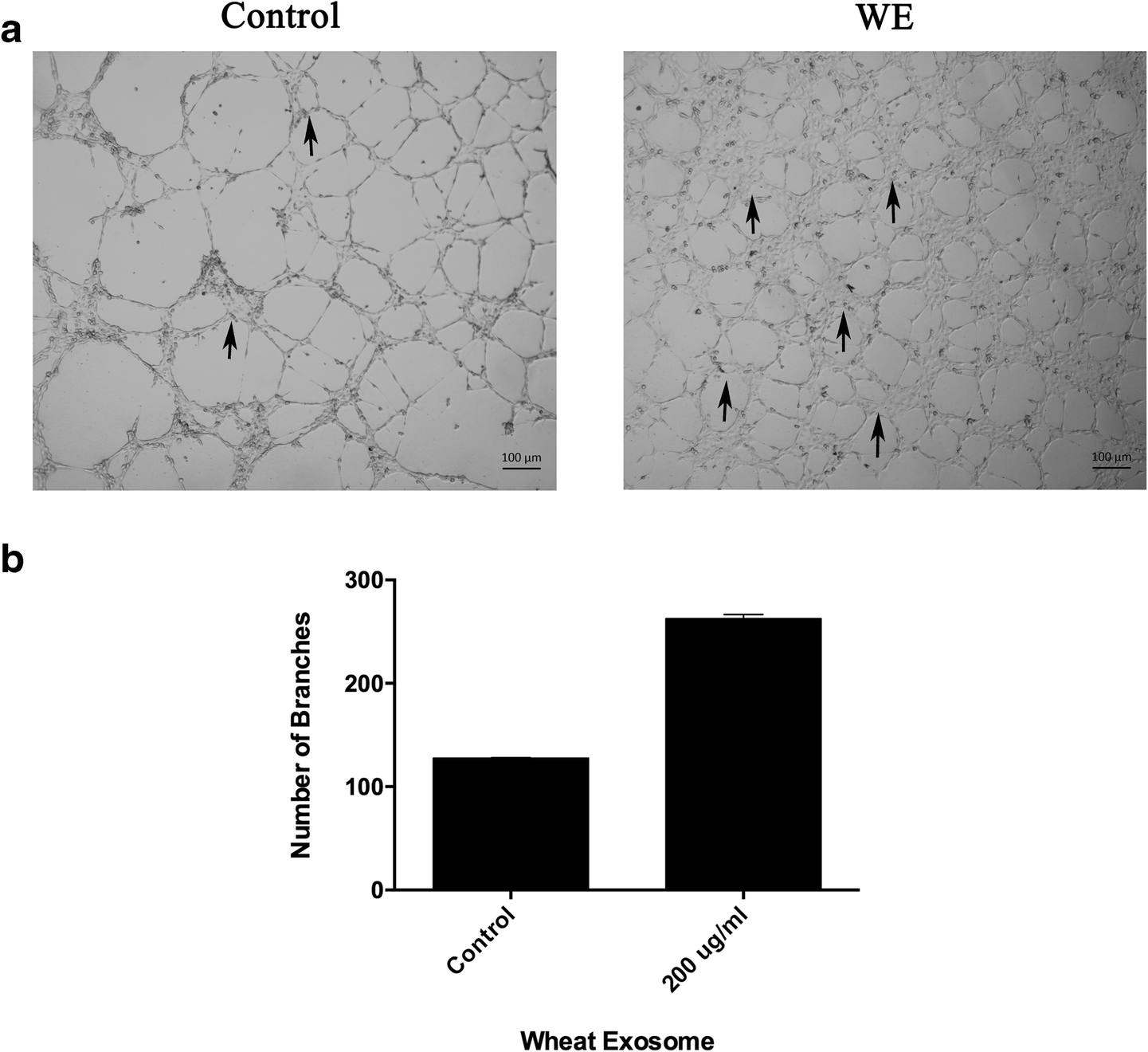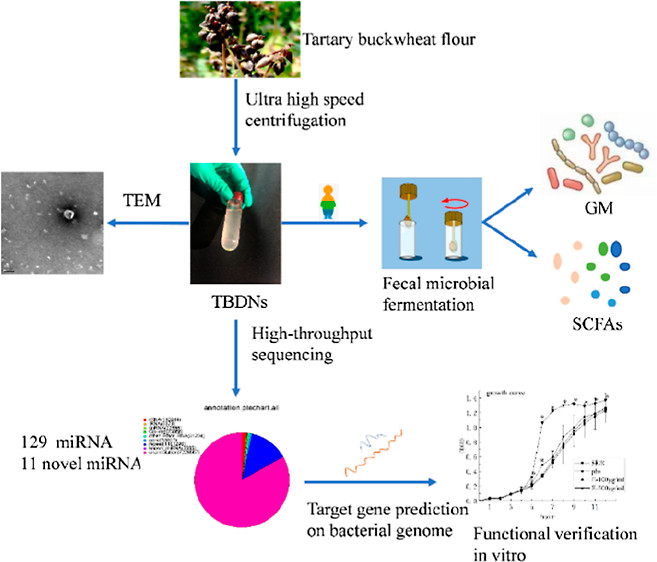Cereal-derived Exosome Research and Applications
Cereal-derived exosomes are nanoscale vesicles isolated and extracted from grains such as wheat, corn, rice, and oats, possessing membrane structures and biological activities similar to animal-derived exosomes. These exosomes are rich in proteins, lipids, nucleic acids, and plant-specific small bioactive molecules, capable of remaining stable and participating in interspecies cellular communication. Cereal-derived exosomes can be efficiently extracted and purified through methods like ultracentrifugation, membrane filtration, and density gradient centrifugation, and characterized in terms of morphology and molecular composition using techniques such as transmission electron microscopy (TEM), nanoparticle tracking analysis (NTA), and mass spectrometry.
Cereal-derived exosome research and applications are widely used in fields such as nutrition, drug delivery, disease treatment, and functional foods. As natural nano-delivery systems, they exhibit excellent biocompatibility, low toxicity, and immunomodulatory functions, enabling the delivery of drugs, RNA, proteins, and other active substances for the treatment of cancer, inflammation, autoimmune diseases, and more. In addition, cereal-derived exosomes are employed in the development of novel functional foods and nutritional supplements, improving human health through mechanisms such as modulation of gut microbiota, antioxidant effects, and anti-inflammatory actions.
Services at MtoZ Biolabs
Based on advanced instruments and analytical platforms, MtoZ Biolabs offers cereal-derived exosome research and applications focusing on the extraction, characterization, and functional study of exosomes derived from grains. This service provides technical support for the efficient isolation of exosomes from various cereals such as wheat, corn, rice, and oats. The service scope includes exosome extraction and purification, particle size and morphological characterization (such as transmission electron microscopy and nanoparticle tracking analysis), component identification (including proteins, lipids, and nucleic acids), functional activity analysis (such as immunomodulatory, anti-inflammatory, and antioxidant effects), and evaluation of drug delivery capabilities. Finally, clients will receive comprehensive experimental reports and data analyses, supporting the development of functional foods, exploration of disease treatment mechanisms, and the establishment of natural drug delivery systems.
Service Advantages
1. Advanced Analysis Platform
MtoZ Biolabs established an advanced cereal-derived exosome research and applications platform, guaranteeing reliable, fast, and highly accurate analysis service.
2. One-Time-Charge
Our pricing is transparent, no hidden fees or additional costs.
3. Broad Application Support
Widely applicable in functional foods, drug delivery, cosmetics, immunomodulation, and other fields, this service offers diversified R&D support to promote both scientific research and industrial translation.
4. Customized Solutions
Tailored to client needs, we provide end-to-end, one-stop services covering cereal-derived exosome extraction, component analysis, and functional validation, meeting R&D demands at various stages in both academia and industry.
Applications
1. Functional Food Development
Cereal-derived exosome research and applications leverage the natural bioactive molecules in cereal exosomes to develop functional foods with anti-inflammatory, antioxidant, and immunomodulatory properties, enhancing the added value of food products.
2. Drug Delivery Systems
Cereal exosomes serve as safe and efficient natural nanocarriers for delivering small-molecule drugs, RNA, proteins, and more, improving drug targeting efficiency and bioavailability.
3. Cosmetics and Skincare
Based on the antioxidant, anti-aging, and repair functions of cereal-derived exosomes, they are applied in skincare and cosmetic products to improve skin health and delay aging processes.
4. Disease Prevention and Adjunctive Therapy
Cereal-derived exosome research and applications utilize the immune-modulating and metabolism-improving properties of cereal exosomes to assist in the prevention and management of chronic diseases such as diabetes and inflammatory disorders.
Case Study
1. In Vitro Wound Healing Activity of Wheat-Derived Nanovesicles
This study aims to investigate the promotive effects of wheat-derived exosomes on in vitro wound healing and evaluate their potential as natural healing agents. The research focuses on exosome-like vesicles extracted from wheat, which are isolated and purified through ultracentrifugation combined with membrane filtration. The exosomes' typical features are confirmed using Transmission Electron Microscopy (TEM) and Nanoparticle Tracking Analysis (NTA) for morphology and size characterization. Subsequently, human keratinocyte (HaCaT) cells are used in scratch assays and cell proliferation assays to assess the impact of exosomes on cell migration and proliferation. The results demonstrate that exosomes significantly enhance HaCaT cell migration and proliferation, accelerate wound closure in vitro, and show no cytotoxicity within effective concentration ranges. The study concludes that wheat-derived exosomes effectively promote wound healing by modulating cellular functions, revealing promising potential as natural and safe biomaterials for skin regeneration and wound repair applications.

Sahin, F. et al. Applied Biochemistry and Biotechnology, 2019.
Figure 1. Tube Formation Assay to Evaluate Promotion of Angiogenesis in HUVEC Cells after the Treatment with Wheat Exosome.
2. In Vitro Effects of Tartary Buckwheat-Derived Nanovesicles on Gut Microbiota
This study aims to investigate the in vitro modulatory effects of Tartary Buckwheat-Derived Nanovesicles (TBELNVs) on the gut microbiota and assess their potential as dietary bioactive factors for regulating gut microbial ecology. The research focuses on nanovesicles isolated from Tartary buckwheat, which are obtained through ultracentrifugation combined with membrane filtration and confirmed for their morphology and size by Transmission Electron Microscopy (TEM) and Nanoparticle Tracking Analysis (NTA). In the experimental setup, TBELNVs are added to a human fecal microbiota culture system to simulate the gut environment. The 16S rRNA sequencing technique is used to analyze the impact on microbial community structure, and short-chain fatty acids (SCFAs) production is also measured. Results demonstrate that TBELNVs significantly promote the proliferation of beneficial bacteria such as Lactobacillus and Bifidobacterium, inhibit the growth of some pathogenic bacteria, and enhance the production of SCFAs including acetate, propionate, and butyrate. The study concludes that Tartary buckwheat-derived nanovesicles exhibit excellent gut microbiota modulatory effects, improving both microbial composition and metabolic outputs, thus supporting gut health and providing valuable evidence for developing plant-based exosome-like nanovesicles with probiotic functions.

Liu, Y. et al. Journal of Agricultural and Food Chemistry, 2022.
Figure 2. The Graphic Abstract of the Study.
FAQ
Q1: How to Assess the Quality of Cereal-derived Exosomes?
A1: The quality of cereal-derived exosomes can be evaluated using Transmission Electron Microscopy (TEM), Nanoparticle Tracking Analysis (NTA), and Western blotting for specific markers. These techniques help analyze exosome size, morphology, purity, and expression of functional molecules, ensuring that exosomes meet the standards required for downstream applications.
Q2: Is it Difficult to Extract Cereal-derived Exosomes?
A2: There are established extraction methods such as ultracentrifugation, density gradient centrifugation, and membrane filtration. However, due to the unique matrix of cereals, some steps may need optimization to ensure high purity and bioactivity of the extracted exosomes, making them suitable for functional studies and application development.
How to order?







